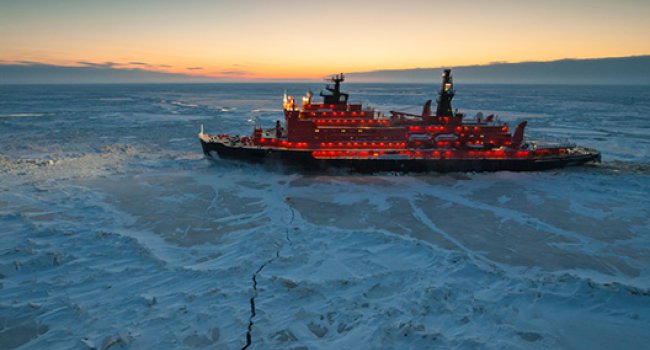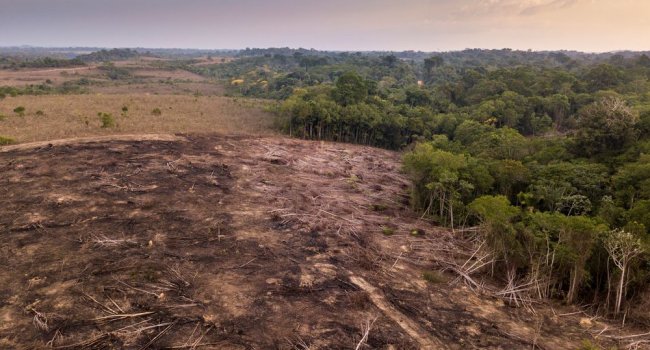
Storebrand's climate policy for investments
Storebrand has committed to our investment portfolios having net-zero GHG emissions by 2050, at the latest.
Commitment
In 2019, Storebrand was one of the founding members of the United Nations-convened Net-Zero Asset Owner Alliance. The members of the Alliance commit to transitioning their investment portfolios consistent with a maximum temperature rise of 1.5°C above pre-industrial temperatures, taking into account the best available scientific knowledge and regularly reporting on progress.
We will emphasize emissions reduction in the real economy and report on progress. This includes establishing intermediate targets every five years in line with Paris Agreement Article 4.9. According to the IPCC, limiting global warming to 1.5°C necessitates a fall in global GHG emissions by about 45 percent from 2010 levels by 2030, reaching ‘net zero’ by 2050. Any remaining emissions in 2050, would need to be balanced by removing CO2 from the atmosphere.
We commit to use the full range of tools that we as investors have at our disposal to induce companies to meet the expectations described in this document. These tools are investing in solutions, use of sustainability ratings, divestment and active ownership. We will cooperate with other financial institutions to promote standards for measuring, monitoring and reporting on climate risks. This commitment is made in the expectation that governments will follow through on their own commitments to ensure the objectives of the Paris Agreement are met. This policy will be overseen by the Board of Directors at Storebrand Asset Management. Responsibility for implementation and assessment of climate risk and opportunities lies with portfolio managers and sustainability teams.
We will report regularly on climate specific indicators, on a portfolio level, and will explain how we manage the investment- related risks and opportunities associated with these indicators.
Storebrand climate policy
Strategies and investment methods
1. Make investment decisions in line with scientific consensus
Storebrand will at all times seek to align its investments with scientific consensus on climate change. This means that Storebrand supports the commitments outlined in the Paris Agreement and that statements and reports from the Intergovernmental Panel on Climate Change (IPCC) will provide the scientific basis for our subsequent investment decision making.
If there is scientific uncertainty with regards to the negative effects of specific activities on climate change, Storebrand will adopt the precautionary principle. In order to accurately gauge climate risk and make informed investment decisions, Storebrand will utilize Climate scenarios as an analysis tool. Selection of scenarios will be in accordance with the following expectations.
- The scenario provider must be scientifically recognized
- Scenarios must cover both transition and physical risk
- Scenario design should not rely on overshoot or on technical optimism
- The scenario provider should deliver a range of scenarios from best case to worst case
On the basis of these expectations, Storebrand will actively use the Intergovernmental Panel on Climate Change (IPCC) models. When setting short, medium and long-term investment strategies, Storebrand will rely on the scenarios consistent with limiting global warming to 1.5 C with no or limited overshoot. These scenarios require CO2 emissions decline by about 45 per cent from 2010 levels by 2030 and net zero emissions by 2050.
2. Reorient capital flows towards low-carbon,climate-resilient and transition companies
Defining what is low-carbon and climate aligned not only presents investment portfolios with risks that need to be mitigated, it also presents new opportunities to diversify portfolios and improve their resilience to the effects of climate change.
The EU taxonomy will be central when defining low-carbon and climate-resilient activities. The Taxonomy sets performance thresholds (referred to as “technical screening criteria”) for economic activities which make a substantive contribution to climate change mitigation and adaptation. These activities must avoid significant harm to other environmental objectives (pollution, waste & circular economy, water, biodiversity) and meet minimum social safeguards, currently defined as ILO Core Labour Conventions.
In addition to using external frameworks like the EU Taxonomy to inform investment decisions, Storebrand will further develop internal analyses in order to identify companies that provide Solutions to managing climate change. Solution companies as identified by Storebrand will be included in investment portfolios.
We will undertake an assessment of companies’ preparedness for the transition to a low-carbon economy, with a focus on high impact sectors. Businesses that are clearly undergoing a transition towards a low-carbon economy will be supported.
We will use the following metrics to measure, monitor and disclose climate-related risks and to capture investment opportunities:
Carbon footprint
Measure the carbon emissions of the investment portfolio, which can then be used to compare portfolio emissions to global benchmarks, identify priority areas for reduction (including the largest carbon emitters and the most carbon intensive companies) and engage with companies on reducing carbon emissions and improving disclosure standards.
Ratings and research
Use the outputs from one or more of the various climate-related data, research and ratings service providers as part of our assessment of climate-related risks and opportunities.
Adaptation metrics
Assess the preparedness of investee companies and entities to the physical impact risks associated with climate change.
Climate risk assessment and monitoring
Storebrand will strengthen and enhance continual climate risk assessment in financial decision making. This means that all fund managers in the Storebrand Group are responsible for assessing and reporting on the climate risk profile of their portfolios. These climate risk assessments will be supported by the sustainable investment teams and followed up in annual fund reviews.
We will continue to report on the overall exposure of our portfolios to the risks and opportunities presented by climate mitigation and adaptation, and to align this reporting with the TCFD recommendations and other
3. Avoid investments that contribute heavily to climate change
Storebrand's Exclusion policy guides our overall approach to environmental risk management. We undertake a robust review of environmental impacts of investments and actively monitor emerging issues and regulatory developments. In addition, we have additional guidelines and due diligence for specific sectors with high climate risks.
These guidelines are reviewed periodically and updated based on emerging best practice, regulatory changes and engagement with stakeholders. Exceptions from divestment limits may be made in cases where companies can demonstrate a clear and rapid transition pathway.
- For Storebrand, this commitment is embedded in a holistic ESG approach, incorporating but not limited to, climate change and emphasizing GHG emissions reductions in the real economy.
Deforestation
Storebrand will no longer invest in companies that are involved in severe and/or systematic unsustainable production of palm oil, soy, cattle and timber.
Lobbying activities
Storebrand will no longer invest in companies that deliberately and systematically work against the goals and targets enshrined in the Paris Agreement. We expect companies to support for effective measures across all areas of public policy that aim to mitigate climate change risks and limit temperature rise to 1,5 degrees Celsius. This support should apply to all engagement conducted by the company in all geographic regions, and to policy engagement conducted indirectly via third party organizations acting on the company’s behalf or with the company’s financial support.
Our work specifically on oil and gas and other high emitting sectors is detailed below.
Coal
Storebrand will no longer invest in companies that derive more than 5 per cent of their revenues from coal.
Oil sands
Storebrand will no longer invest in companies that derive more than 5 per cent of their revenue from oil sands based activities.
4. Use ownership position to stimulate ambitious climate practices at portfolio companies
In Storebrand’s view, one of the best ways to effect change is to be an active owner and to engage with portfolio companies. We will seek to build positive dialogue with companies, aiming to support their transition to low carbon and climate-resilient activities. This will be done both through individual dialogue, but also through investor initiatives such as the PRI and Climate Action 100+.
Exercising our voting rights at company AGMs is also an important way of influencing company policy on climate change. Where appropriate, we will support shareholder resolutions on climate change, participate in investor statements and engage with policy makers at national, regional and global levels. Efforts will also be made to influence external fund managers to adopt climate policies in line with our own.
Ecosystem based approach to climate change
Although we are mindful that climate change risk may be especially relevant to sectors with large greenhouse gas emissions such as coal mining, oil and gas production and electricity production from fossil fuels, we acknowledge the vital role of biodiversity and ecosystems in climate change mitigation and adaptation.
According to IPCC, ecosystems such as forests are used to reduce greenhouse gas emissions and to conserve and expand carbon sinks.
Nature-based approaches are often more cost-effective in the long term than purely technical approaches and can produce important additional socio-economic benefits for the environment, citizens, and the local economy. We therefore integrate nature into our investment strategies, mindful that mitigation or adaptation activities should not do harm to valuable and vulnerable ecosystems.
As highlighted by the IPCC, sectors that act as carbon sinks such as forestry and oceans will be given special attention.
Highlighted sectors

Ecologically important and vulnerable areas
We will engage with companies operating or planning projects in valuable and vulnerable ecosystems such as Arctic drilling projects, pipelines, or other infrastructure projects.

Sustainable land use change
According to IPCC, agriculture, forestry and land use account for 24% of the greenhouse gas emissions arising from human activity, with the majority of this coming from land use change and tropical deforestation and degradation. As a part of our commitment to halt deforestation, we will engage with companies in our portfolio, that are involved in production, trade, use or financing of forest-risk commodities, particularly palm oil, soy, timber and cattle products.

Oceans
We will engage with companies with activities directly in, or on, the ocean, and with those whose land-based activities or value chains are materially dependent on, or affect, the ocean. Examples of relevant sectors include ocean-based industries such as shipping, aquaculture and
land-based industries such as waste management, mining and consumer goods.
High emitting sectors
To ensure a climate trajectory of no more than 1,5°C of global warming and reduce climate-related financial risks, it is crucial to work with the highest GHG emitting sectors in their decarbonization pathway. We acknowledge that the carbon-mitigation pathways will be different for different
sectors, based on factors such as available technology and infrastructure and will take this into consideration.
By 2020, Storebrand will map our portfolio exposure to high emitting sectors, set targets for the relevant sectors (starting with 2025), and report on the exposure and progress per sector annually.
We will also work actively with investor groups such as Climate Action 100+ and Net Zero Asset Owner Alliance to ensure necessary decarbonization
In addition, we will expect companies in high emitting sectors to:
- Publicly disclose scope 1-3 GHG emissions
- Integrate relevant climate change risks and opportunities (physical or transition) in their investment
planning, risk management and reporting. Reporting
should be in line with international recognized reporting initiatives - Have a strategy addressing a transition to a low-emissions energy system. These efforts should be in line
with recommendations from the Task Force on Climate-related Financial Disclosures (TCFD) - Set scientifically verifiable targets that support a 1,5°C
pathway - Implement executive compensation linked
to the above-mentioned climate targets - Incorporate social considerations into company decarbonization strategies, to secure the trust of workers
and communities
Oil and gas
We expect companies in this sector, to develop the business strategies required, to manage the transition to a sustainable low carbon energy system. The main expectations we have of companies are as follows:
- Governance: Clearly define board and management governance processes to ensure adequate oversight of climate-related risks and the strategic implications of planning for a transition consistent with 1.5°C
- Strategy: Integrate the management of climate-related risks and opportunities into business strategy and ensure business models are resilient in the face of a range of energy transition scenarios.
- Implementation: Embed scenario analysis and ‘stress testing’ within key business planning processes, investment decisions and metrics on a regular basis.
- Transparency and disclosure: Disclose, the company’s view of, and response to, its material climate-related risks and opportunities as outlined in the rest of this document
and operational emissions. - Public policy: Ensure there is broad oversight and transparency regarding the company’s lobbying activity and political spending on climate-related regulatory issues (including carbon/methane emissions, energy and transport), as well as consistency between a company’s public positioning on climate change and its lobbying activities.
- Avoid exploration or extraction of oil and gas from areas of high biodiversity value.
- Increase percentage of CAPEX in low carbon technologies or increase dividends.
Indirect financing
We will also engage with financial institutions with large exposure to sectors with high climate risk. We expect these institutions to adopt and implement policies to address climate related financial risks and opportunities in their investments and financial operations.
5. Make it simple for clients to understand and contribute to a low carbon future
One of the most important goals for Storebrand Asset Management is to increase investment in products that actively contribute to the mitigation of and adaptation to climate change.
We will offer climate positive investment products across asset classes and investment styles in order to make these products accessible to all our clients.
In addition, we will ensure that the impacts of these products are reported regularly and transparently.
Examples of products we will seek to offer are fossil free funds, Green Bond funds, Sustainable Property investments, and equity funds dedicated to investing in climate solutions.
This policy is a supporting document to the Storebrand Group Sustainable Investment Policy, detailing how Storebrand Asset Management (SAM) invests to mitigate and adapt to climate change through investments. As a large institutional asset manager, SAM has long-term investment horizons and liabilities.
Our fiduciary responsibility is to manage our customers portfolios with the best risk- adjusted returns long term. Climate risk is now acknowledged as one of the greatest risks facing humanity. This realization is slowly causing a massive shift of capital, away from the highest emitters of fossil fuels towards companies that provides solutions to the climate crisis. We are not only vulnerable to the systemic disruptions that climate change will unleash on ecosystems, societies, and our own portfolio companies, but also have a key role to play in accelerating de-carbonization of the global economy and investing in climate-resilience. As such, SAM is committed to realizing the goals of the Paris Agreement and to making finance flows consistent with a pathway towards low greenhouse gas emissions and climate-resilient development. Successfully managing climate change will require substantial investments far beyond what the public sector can muster.
We expect companies to address climate change in a manner meaningful to their operations and wish to support their efforts in managing the risks and pursuing opportunities. Our expectations are directed at all companies in our portfolio including banks financing high-risk climate projects. We will focus on the most substantial greenhouse gas emitters considering emissions across scope 1, 2 and 3, as well as those companies that we believe present the greatest climate-related risk to our portfolios.
Although we are mindful that climate change risk may be especially relevant to sectors with large greenhouse gas emissions such as coal mining, oil and gas production and electricity production from fossil fuels, we acknowledge the vital role of biodiversity and ecosystems in climate change mitigation and adaptation. Land use change represents significant climate-related risks to investors. Our expectations are therefore also specifically related to activities such agriculture and activities involving significant clearing of forested land.
Finally, climate change will be addressed in a manner consistent with our obligations to respect, protect and promote human rights. The impacts of climate change on ecosystems and human settlements are already undermining access to clean water, food, shelter, and other basic human needs; interfering with livelihoods; and displacing people from their homes. What is more, addressing climate change may also have implications for people who are exposed to more risks or have disadvantageous starting points in the energy transition. The Paris Agreement also covers this issue by stating that policies to deliver decarbonisation and resilience should also take into account the imperatives of a just transition of the workforce.
